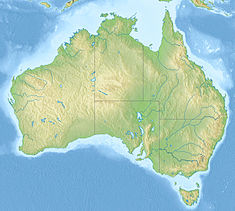
Parramatta is a central suburb of the City of Parramatta and a major commercial centre in Greater Western Sydney. Parramatta is located approximately 24 kilometres (15 mi) west of the Sydney CBD, on the banks of the Parramatta River. It is commonly regarded as the secondary central business district of metropolitan Sydney.

Liverpool is a suburb of South Western Sydney, in the state of New South Wales, Australia, 31 kilometres (19 mi) south-west of the Sydney CBD. It is the administrative seat of the City of Liverpool and is in the Cumberland Plain.
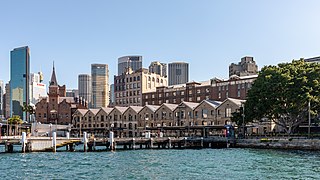
The Rocks is a suburb, tourist precinct and historic area of Sydney's city centre, in the state of New South Wales, Australia. It is located on the southern shore of Sydney Harbour, immediately north-west of the Sydney central business district.
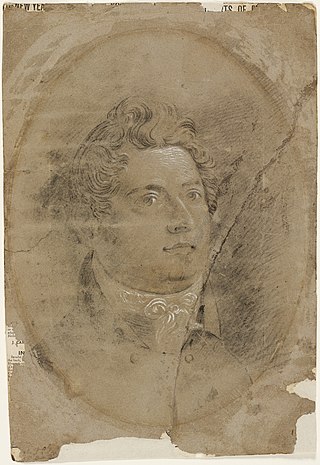
Francis Howard Greenway was an English-born architect who was transported to Australia as a convict for the alleged crime of forgery. He became known as the ‘forefather of Australian architecture’. In New South Wales he worked for the Governor, Lachlan Macquarie, as Australia's first government architect. He became widely known and admired for his work displayed in buildings such as St Matthew's Church, St James' Church and Hyde Park Barracks.

Burwood is a suburb in the Inner West of Sydney, in the state of New South Wales, Australia. It is 10 kilometres (6.2 mi) west of the Sydney central business district and is the administrative centre for the local government area of Municipality of Burwood.
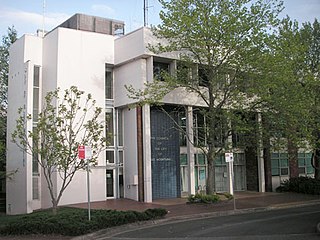
The City of Blue Mountains is a local government area of New South Wales, Australia, governed by the Blue Mountains City Council. The city is located in the Blue Mountains, on the Great Dividing Range at the far western fringe of the Greater Sydney area. Major settlements include, Katoomba, Lawson, Springwood and Blaxland.

Millers Point is an inner-city suburb of Sydney, in the state of New South Wales, Australia. It is on the north-western edge of the Sydney central business district, adjacent to The Rocks and is part of the local government area of the City of Sydney.

Hartley is a historical village in the Central West region of New South Wales, Australia, within the City of Lithgow local government area, located approximately 127 kilometres (79 mi) west of Sydney. Hartley is located below the western escarpment of the Blue Mountains.

The Parramatta Female Factory, is a National Heritage Listed place and has three original sandstone buildings and the sandstone gaol walls. The Parramatta Female Factory was designed by convict architect Francis Greenway in 1818 and the only female building authorized by Governor Lachlan Macquarie. It comprises the 1821 Matron's Quarters and Administration and Stores Building, the 1821 Female Hospital and the 1826 3rd Class Female Penitentiary. It is the first female factory in the penal colony of New South Wales, and is located at 5 Fleet Street, North Parramatta, New South Wales, Australia. It was one of 13 female factories in the colonies of New South Wales and Van Diemen's Land. In New South Wales, female factories were also established in Bathurst, Newcastle, Port Macquarie and Moreton Bay. The factory idea was a combination of the functions of the British bridewells, prisons and workhouses. The Parramatta Female Factory is being considered for World Heritage listing.

The City of Lithgow is a local government area in the Central West region of New South Wales, Australia. The area is located adjacent to the Great Western Highway and the Main Western railway line.
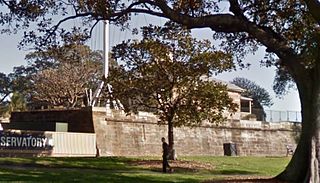
Fort Phillip was a citadel style fort constructed as part of the first defensive works of the penal settlement of Sydney, located on Observatory Hill in the Sydney suburb of Millers Point, New South Wales, Australia. The fort has been demolished and the local government heritage-listed site repurposed as the Sydney Observatory.

The Gladesville Mental Hospital, formerly known as the Tarban Creek Lunatic Asylum, was a psychiatric hospital established in 1838 in the Sydney suburb of Gladesville. The hospital officially closed in 1993, with the last inpatient services ceasing in 1997.

Mortimer William Lewis was an English-born architect, surveyor and public servant who migrated to Australia and became Colonial Architect in the colony of New South Wales from 1835 to 1849. Lewis was responsible for designing and overseeing many government buildings in Sydney and rural New South Wales, many of which are heritage listed.

Convict Lumber Yard is a heritage-listed site at 98 Scott Street, Newcastle, New South Wales, Australia. Largely an archaeological site, it has been the location of a convict lumber yard, convict stockade and a series of shipping and railway-related buildings. The former station master's residence and paymaster's office survive intact alongside archaeological remains of the site's various other usages. It was added to the New South Wales State Heritage Register on 2 April 1999.
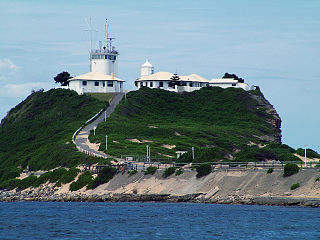
Coal River Precinct is a heritage-listed historic precinct at Nobbys Road, Newcastle, New South Wales, Australia. It was built from 1804 to 1960. It includes Fort Scratchley, Nobbys Head, the Convict Lumber Yard site, Macquarie Pier, the breakwater and Nobby's Beach. It was added to the New South Wales State Heritage Register on 19 December 2003.

Port Macquarie Government House Site is a heritage-listed archaeological site at 2 Clarence Street, Port Macquarie, Port Macquarie-Hastings Council, New South Wales, Australia. It was built from 1824 to 1826 by convict labour. The property is owned by Port Macquarie-Hastings Council. It was added to the New South Wales State Heritage Register on 3 August 2001.
The Warders Cottages are adjoining heritage-listed cottages at 1 and 3 Barrack Lane, Parramatta, City of Parramatta, Sydney, New South Wales, Australia. They were added to the New South Wales State Heritage Register on 2 April 1999.

Murphy House is a heritage-listed former residence at 1 Marist Place, Parramatta, City of Parramatta, New South Wales, Australia. It was designed by James Whitmore Hill and built from 1904 by A. E. Gould. It is also known as St Patrick's Cathedral Presbytery and Murphy's House. It was added to the New South Wales State Heritage Register on 2 April 1999.

The Parramatta Female Factory and Institutions Precinct is a heritage-listed conservation site in Parramatta, in the City of Parramatta local government area of New South Wales, Australia. The site was used as the historically significant Parramatta Female Factory from 1821 to 1848. After its closure, the main factory buildings became the basis for the Parramatta Lunatic Asylum, while another section of the site was used for a series of other significant institutions: the Roman Catholic Orphan School (1841–1886), the Parramatta Girls Home (1887–1974), the "Kamballa" and "Taldree" welfare institutions (1974–1980), and the Norma Parker Centre (1980–2008).
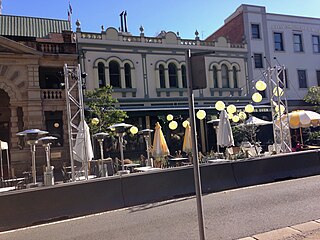
121 George Street, The Rocks is a heritage-listed retail building and former terrace house and shops located at 121 George Street, in the inner city Sydney suburb of The Rocks in the City of Sydney local government area of New South Wales, Australia. It was built during 1880 for Thomas Playfair. It is also known as Baker's Oven – Shop and residence. The property is owned by Property NSW, an agency of the Government of New South Wales. It was added to the New South Wales State Heritage Register on 10 May 2002.


